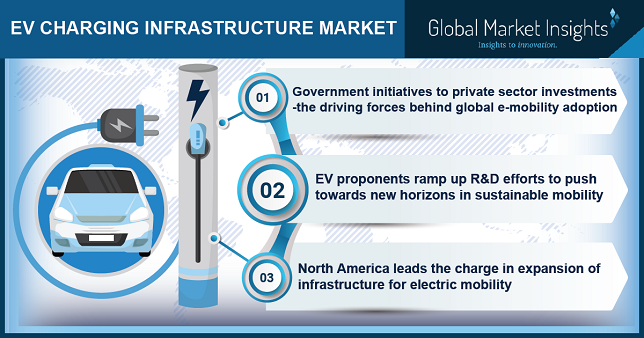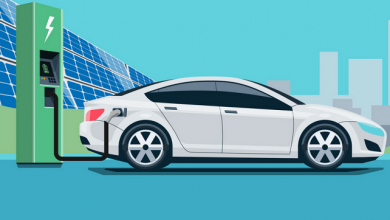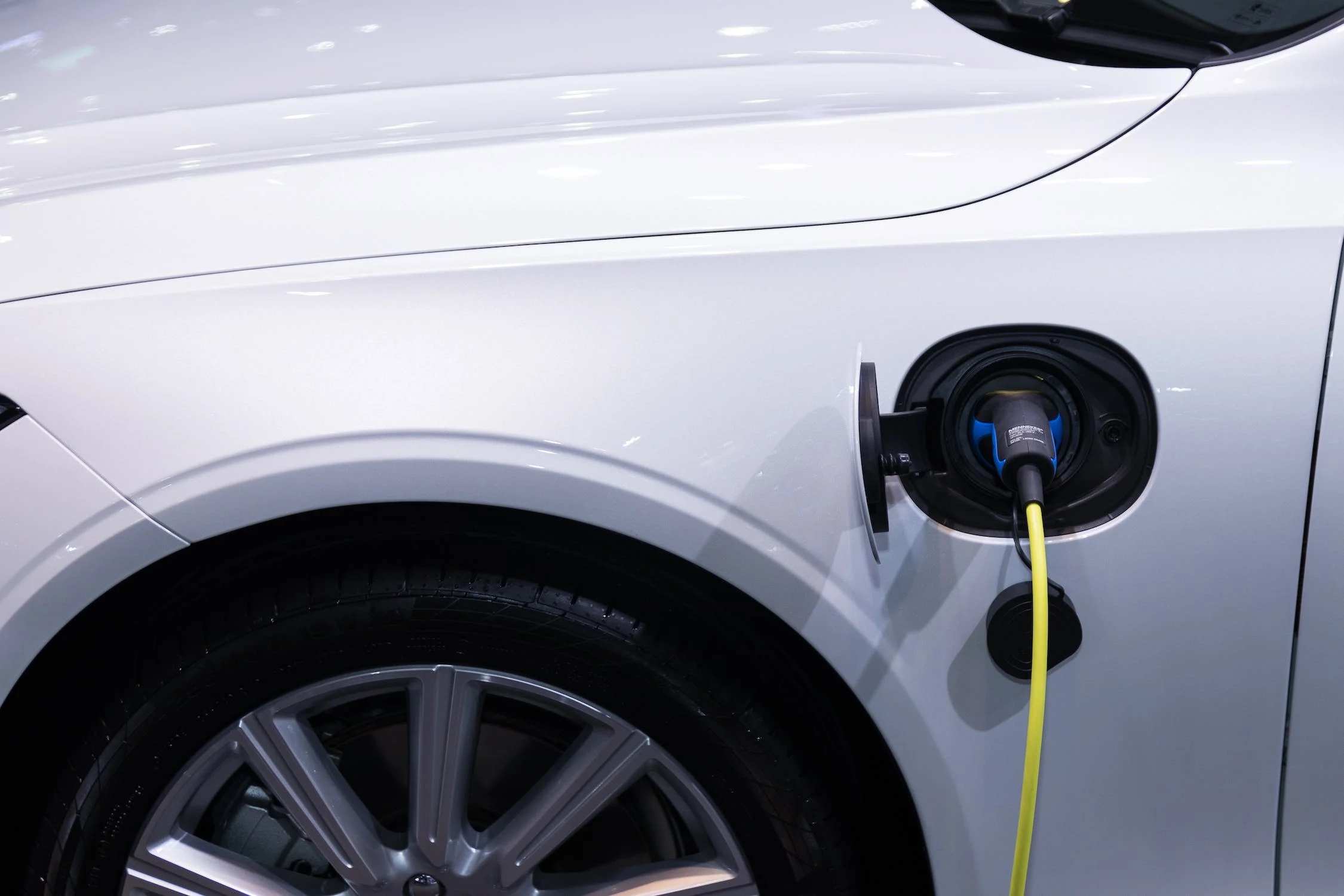EV charging infrastructure to serve as important catalyst in global deep decarbonization ventures
Ever-increasing decarbonization efforts and the rise of electric mobility underpin the importance of robust EV charging infrastructure for sustainable transport in the future.

In a world facing the prevailing threat of climate change and increasing emissions, decarbonization is the need of the hour. The need for deep decarbonization technologies is growing rapidly, particularly due to factors like fossil fuel combustion, which is a major source of global GHG emissions. This has brought the transportation and mobility sector under intense scrutiny of late.
The path to decarbonization requires industries, like transport, to revamp their energy consumption patterns to fit more sustainable mobility demands. This is important, considering that transport is singlehandedly responsible for nearly 20% of the world’s energy-related emissions, causing over 80% of the city-dwelling population to be exposed to pollution levels way beyond the limits set by the WHO (World Health Organization). To address these issues, the mobility sector over the last few years has been making targeted efforts to transition from conventional ICE (internal combustion engine)-powered vehicles to electric vehicles (EV).
According to the US Department of Energy and Electric Power Research Institute, EVs are poised to represent nearly 40% of new car purchases in the United States by 2030, registering a rise of almost 2%. However, if electric mobility is to endorse deep decarbonization economy-wide, significant investments are required in the EV charging infrastructure market, which is set to surpass $61 billion by 2027, based on a Global Market Insights Inc. report.
Government initiatives to private sector investments – the driving forces behind global e-mobility adoption
EV evolution is gaining massive momentum worldwide, garnering support from the government and private sectors alike. Major initiatives are underway across the globe to promote the wider adoption of electric mobility solutions. From governments worldwide, these initiatives have mainly emerged in the form of multiple policy initiatives and investments targeted towards accelerating EV adoption.
To illustrate, in February 2021, the Singapore government introduced a new EV rebate slated for launch in 2022, as part of its EV Early Adoption Initiative. As part of this effort, the government has pledged to set aside S$30 million over the upcoming five years, to bolster EV-related initiatives, including measures aimed at enhancing EV charging provisions at private premises. The private sector has also made its contributions to this movement, with major automakers including Volvo, VW, GM, BMW, Audi, and Nissan pledging to make a cumulative investment of $150 billion towards EV manufacturing and announcing their intention to introduce new EV models throughout the 2020s.
Aside from vehicle availability, a successful transition towards e-mobility hinges on a critical factor; the development of a robust EV charging infrastructure. According to estimates from the WEF, businesses and governments will be required to spend nearly $500 billion by 2040, to establish 290 million additional charging points for electric vehicles. The COVID-19 crisis also added impetus to the EV transition to a certain extent, with numerous economic stimulus packages being launched for battery storage and charging infrastructure development in prominent regions like Europe.
Countries like France, Germany, Sweden, Italy, and the Netherlands are testament to this, introducing national targets and policies that encourage the development of EV charging technology, ranging from fiscal incentives to grants. The German government, for example, decided to extend various stimuli to boost the sales of both commercial and personal electric vehicles, in November 2020.
These incentives included an extension of innovation premiums to 2025, as well as requirements and subsidies for EV charging infrastructure expansion. The stimulus for charging stations also included the creation of fast-charging infrastructure with a minimum of 150 kW at former gas facilities. The objective behind this move was to expedite the German government’s efforts to equip at least a quarter of all its pitstops with fast-charging infrastructure by 2022 end.
Public charging infrastructure development to address EV range anxiety dilemma
It is becoming increasingly apparent that the future of mobility is electric, with EVs positioned at the center of the transition. As the EV ecosystem continues to evolve, however, certain challenges are emerging as barriers to widespread EV uptake, most notably limitations associated with charging infrastructure. Range anxiety is being cited as a major roadblock to EV adoption by potential car buyers in recent years, given the uncertainty that still surrounds EV technology, especially when it comes to charging. Based on a report from Volvo, nearly 58% of drivers claimed range anxiety as a barrier for the purchase of an electric vehicle.
The growing focus on the improvement of charging provisions in workplaces and other public areas is helping alleviate this anxiety. GMI analysts suggest that the EV charging infrastructure industry from the public sector was worth almost $8 billion in 2020. The establishment of wide-ranging public infrastructure for EV charging is essential, not just due to the constant surge in EV use, but also to make sure that modern electric vehicles are as convenient and cost-effective as their conventional counterparts.
In order to support this, steady additions to EV charging infrastructure are needed over the years ahead. Estimates from the ICCT suggest that workplace and public charging stations need to increase by 27% each year, to facilitate consistent EV growth through 2030. To that end, Royal Dutch Shell Group in February 2021 announced its intention to invest $5 billion to $6 billion in its EV initiatives, including the establishment of over 500,000 charging locations by 2025.
North America leads the charge in expansion of infrastructure for electric mobility
The EV charging infrastructure industry in North America is projected to amass significant proceeds over the years ahead, especially in the U.S. given the robust EV movement in the Pacific Northwest and California. Based on a report from California New Car Dealers Association, new BEV and PHEV registrations in the state reached almost 130,000 in 2020, accounting for nearly 8% of all light vehicles. The state is also known for its strong policy structure pertaining to electric vehicle adoption, including the Zero-Emission Vehicle (ZEV) program, a part of California’s broader vision to improve air quality and reduce GHG emissions, designed to incentivize EV sales.
Several companies across the nation are also taking up crucial projects to design, develop and fund the development of charging infrastructure for electric mobility.
Electrify America, for instance, introduced its “Boost Plan” in July 2021, intending to expand its EV charging infrastructure in Canada and the U.S. by almost double, with plans to establish over 1,800 fast-charging stations and install 10,000 individual chargers by the end of 2025. With the objective of boosting the deployment of 150 kW and 350 kW chargers – the fastest of their kind – this plan is expected to blaze the trail for a stronger EV future in North America.
Meanwhile, General Motors announced plans in October 2021, to install close to 40,000 Level 2 EV charging stations across Canada and the United States, to uplift EV interest. The company is among the many giants of the automotive industry to make targeted transition efforts towards electric models of all vehicles by 2030. GM has also pledged to a complete phase-out of diesel and gas vehicles by 2035 and make a shift to EV models. The initiative is set to commence in 2022 and is a part of GM’s recent investment commitment of almost $750 million to enhance the workplace, public, and home electric vehicle charging infrastructure via its new Ultium Charge 360 ecosystem.
EV proponents ramp up R&D efforts to push towards new horizons in sustainable mobility
With the era of electric vehicles approaching, the emergence of novel and innovative charging technologies is a fundamental driver for the upcoming green transport revolution. Manufacturers and organizations worldwide are focused on increasing their R&D activities to meet this need and are undertaking various strategic efforts to boost the EV ecosystem.
For instance, in October 2020, scientists from INL (Idaho National Laboratory) began working collaboratively with XENDEE Corporation on a U.S. DOE Microgrid Program-funded project, for the designing, modeling, and simulation of Fast Charging Station Microgrids, built to provide optimum EV charging whilst minimizing electrical grid impact.
In November 2020, DEWA (Dubai Electricity and Water Authority) registered a new patent following the development of a universal smart EV charging system by researchers at its R&D Center. The system is designed to charge all types of EVs, irrespective of whether they use DC or AC, with a single plug and cable. The design of the charging stations, which is aimed at being as user-friendly as possible, helps simplify the EV charging process and allows all EV drivers to charge their vehicles easily.
ABB is also making its contributions to this cause, notably through its launch of a new all-in-one EV charger in September 2021, designed to provide the fastest charging experience in the market. The new charger, dubbed Terra 360, is modular in design and is built for simultaneous charging of up to four vehicles, via dynamic power distribution. The objective behind this launch was to not just accommodate the charging needs of private EV drivers at convenience stores, fueling stations, and retail locations, but also to create a robust charging network on commercial premises which could cater to the charging needs of electric fleet vans, trucks and cars.
The industry’s earlier reticence towards switching completely to new mobility solutions has created considerable barriers to EV adoption over the years. However, things are beginning to change gradually, with constant efforts from the automotive sector and regulatory agencies alike to advance EV charging technology, which is key to addressing the ever-prevalent range anxiety issue. Although the complete transition to EVs worldwide may still be a work in progress, enhancements to the EV ecosystem, especially in terms of charging infrastructure development could prove extremely beneficial for the transport industry in its quest for achieving its vision of a more sustainable mobility future.
Source: Global Market Insights, Inc.
Author:

Saloni Walimbe
Content Writer
Global Market Insights Inc.
An avid reader since childhood, Saloni is currently following her passion for content creation by penning down insightful articles relating to global industry trends, business, and trade & finance. With an MBA-Marketing qualification under her belt, she has spent two years as a content writer in the advertising field. Aside from her professional work, she is an ardent animal lover and enjoys movies, music and books in her spare time.
Published in Telematics Wire





